Creating a rustic bathroom countertop can add a touch of warmth and natural beauty to your space. Whether you prefer the raw texture of reclaimed wood, the rugged look of stone, or the charm of vintage pieces, there are numerous options to consider. The rustic design emphasizes natural elements, imperfections, and simplicity, making it an excellent choice for a cozy and inviting bathroom. Here are some comprehensive and informative ideas to inspire your rustic bathroom countertop project.
One popular option for a rustic bathroom countertop is reclaimed wood. This material brings history and character to the bathroom with its aged texture and unique grain patterns. Reclaimed wood can be sourced from old barns, factories, or even shipping pallets, making it an environmentally friendly choice. To ensure durability in a bathroom setting, the wood should be properly treated and sealed to resist moisture and humidity.
Natural stone countertops, such as granite, slate, or soapstone, also complement rustic bathroom designs. These materials offer a rugged and organic look that fits well with the rustic aesthetic. Each stone has unique veining and coloration, adding a distinct personality to your bathroom. Stone countertops are highly durable and can withstand the wet environment of a bathroom, but they may require regular sealing to maintain their appearance and prevent stains.
Concrete countertops are another versatile option for a rustic bathroom. They can be customized with various textures, colors, and finishes to achieve the desired rustic look. Concrete can be stained, polished, or left rough to enhance its natural appeal. Additionally, it can be molded into any shape, allowing for unique and creative countertop designs. Concrete countertops are durable and water-resistant, making them suitable for bathrooms.
Live edge wood countertops bring a raw and natural element to rustic bathroom designs. These countertops retain the natural shape of the wood, including the bark and irregular edges, which adds a touch of wilderness to the space. Live edge wood can be used as a full countertop or as an accent piece, such as a vanity shelf. Proper sealing is crucial to protect the wood from moisture and maintain its beauty over time.

For a more industrial rustic look, consider using metal countertops. Copper, zinc, or stainless steel can be incorporated into a rustic bathroom design to provide a unique contrast with other natural elements. Over time, metals like copper and zinc develop a natural patina, enhancing their rustic charm. These materials are durable and easy to clean, but they may require occasional maintenance to keep them looking their best.
Tile countertops can also fit well in a rustic bathroom. Handcrafted or terracotta tiles add a warm and earthy feel to the space. You can choose tiles with natural textures and colors, or even vintage tiles for a more eclectic rustic look. Tile countertops are practical for bathrooms because they are easy to clean and can handle moisture well. However, the grout lines will need regular maintenance to prevent mold and staining.
Bamboo countertops offer an eco-friendly and sustainable option for a rustic bathroom. Bamboo has a unique, linear grain pattern that adds visual interest and a touch of the exotic to the space. It is also highly durable and naturally water-resistant, making it a good choice for bathroom countertops. Bamboo can be finished with a clear sealant to protect it from moisture and enhance its natural color.

Recycled glass countertops provide a modern twist on rustic design. These countertops are made from crushed glass mixed with resin or concrete, resulting in a durable and visually striking surface. Recycled glass countertops can mimic the appearance of natural stone while offering a more sustainable option. They are available in various colors and patterns, allowing you to create a unique look that complements your rustic bathroom.
Butcher block countertops, traditionally used in kitchens, can also be adapted for a rustic bathroom. They are made from strips of wood glued together, creating a sturdy and functional surface. Butcher block countertops add warmth and texture to the bathroom and can be easily sanded and refinished if they become scratched or worn. Proper sealing is essential to protect the wood from moisture.
Another idea is to repurpose vintage furniture pieces as bathroom countertops. An old dresser, sideboard, or even a farmhouse table can be transformed into a unique and rustic bathroom vanity. This approach not only adds character to your bathroom but also promotes sustainability by reusing existing furniture. The top of the furniture piece can be modified to accommodate a sink and plumbing.
Natural edge stone slabs, similar to live edge wood, retain the original shape and contours of the stone. These slabs create a striking and organic look in a rustic bathroom. Each slab is unique, with variations in color, texture, and shape, adding a one-of-a-kind element to the space. Like other stone countertops, natural edge slabs require sealing to protect against moisture and staining.
For a truly unique rustic countertop, consider using petrified wood. Petrified wood is fossilized wood that has turned to stone over millions of years. It retains the appearance of wood while possessing the durability of stone. This rare and exotic material can add a dramatic focal point to your rustic bathroom. Petrified wood countertops are typically high-end and require proper sealing to protect their surface.
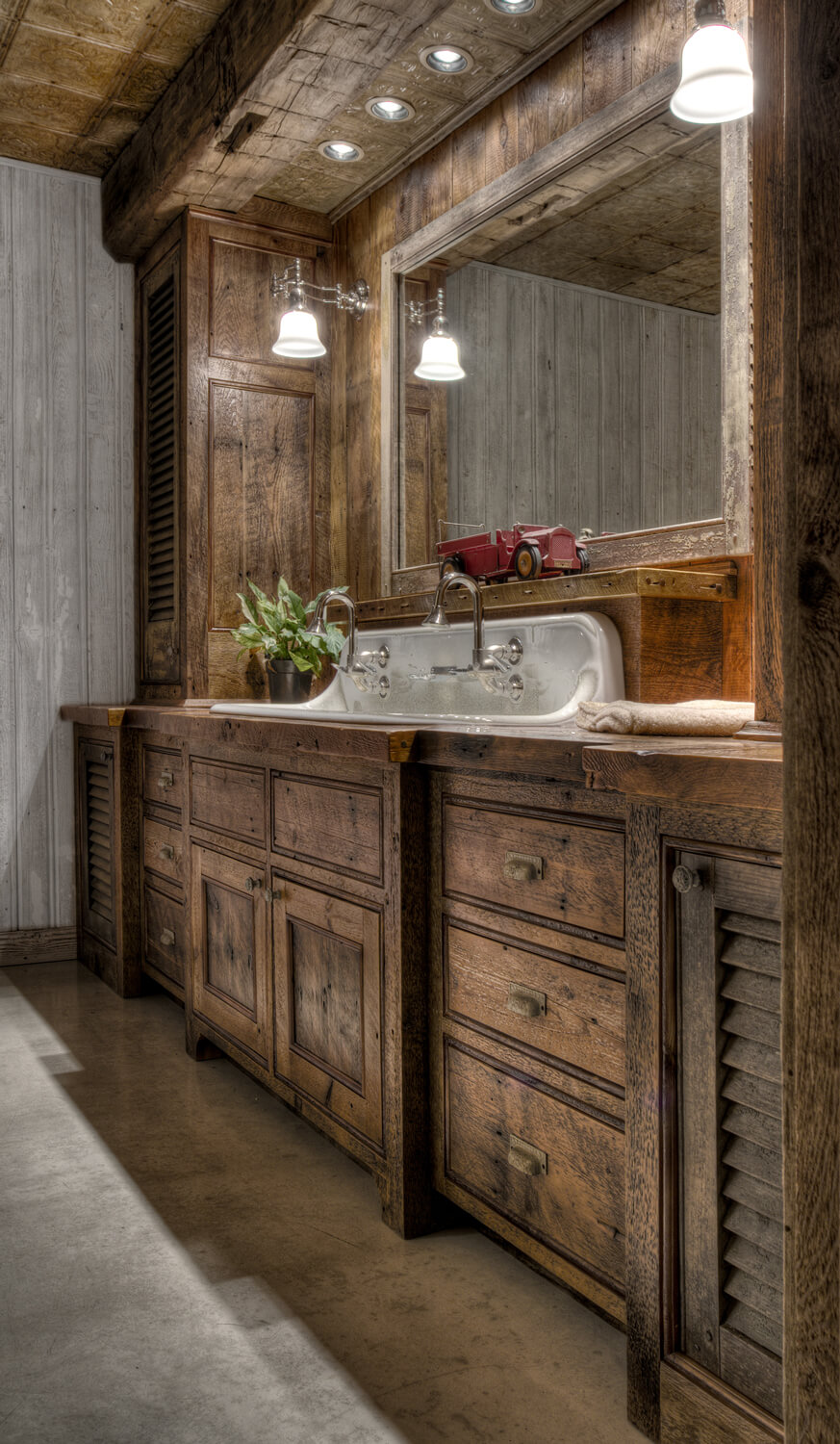
Incorporating a mix of materials can also enhance the rustic charm of your bathroom countertop. Combining wood with stone, metal, or tile can create a layered and textured look that adds depth to the design. For example, a wooden countertop with a stone vessel sink or metal accents can create a balanced and harmonious rustic aesthetic.
When choosing a rustic bathroom countertop, consider the overall design of your bathroom. Elements like cabinetry, flooring, and fixtures should complement the countertop material to create a cohesive look. Rustic design often incorporates natural colors and textures, so choose materials that highlight these elements and contribute to a warm and inviting atmosphere.
Proper maintenance is crucial for keeping your rustic bathroom countertop looking its best. Different materials have different care requirements, but regular cleaning and sealing are generally necessary to protect against moisture, stains, and wear. Follow the manufacturer’s recommendations for maintenance to ensure the longevity and beauty of your rustic countertop.
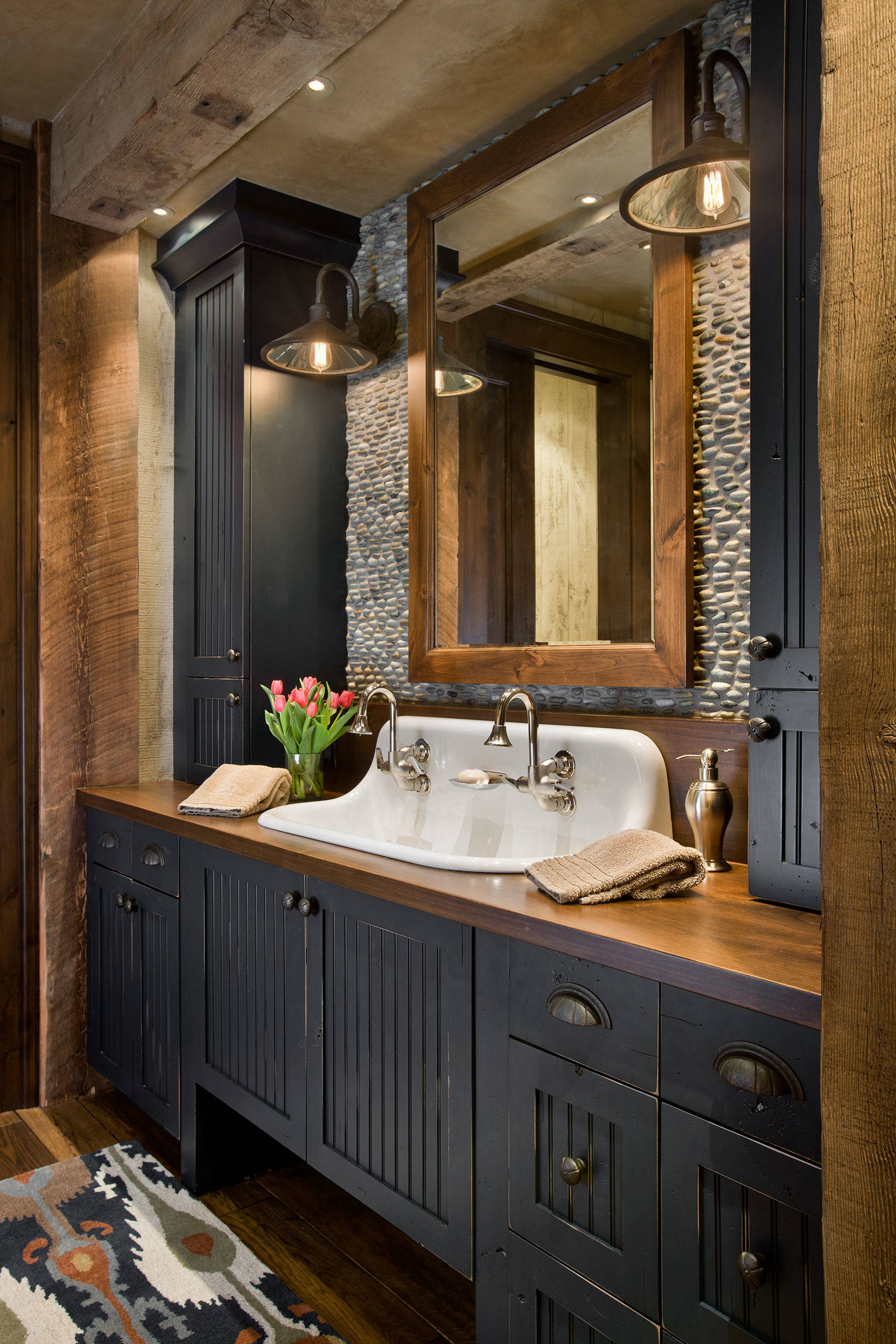
Common Mistakes to Avoid
One common mistake when selecting a rustic bathroom countertop is neglecting to consider moisture resistance. Bathrooms are high-humidity environments, and materials that are not properly sealed or inherently water-resistant can warp, crack, or develop mold. Ensure that any wood used is adequately treated and sealed to withstand the damp conditions.
Another mistake is choosing materials that require high maintenance without being prepared for the upkeep. Some rustic materials, like wood and certain stones, need regular sealing and care to maintain their appearance. Failing to keep up with maintenance can lead to damage and reduce the lifespan of your countertop.
Overloading the bathroom with too many rustic elements can also be a design mistake. While the rustic style is charming, balance is key to avoid a cluttered or overwhelming look. Pair rustic countertops with simpler, more modern fixtures to create a harmonious and inviting space.
Improper installation can be a significant issue. Ensure that countertops, especially heavy materials like stone and concrete, are properly supported and installed by professionals if necessary. Incorrect installation can lead to instability and potential damage to both the countertop and surrounding cabinetry.
Using harsh cleaning products on rustic materials is another common mistake. Many natural materials can be damaged by abrasive cleaners or harsh chemicals. Always use gentle, appropriate cleaning solutions and follow the care guidelines specific to your countertop material.

What are the best materials for a rustic bathroom countertop?
The best materials for a rustic bathroom countertop include reclaimed wood, natural stone (such as granite, slate, or soapstone), concrete, live edge wood, metal (such as copper or zinc), handcrafted tile, bamboo, recycled glass, butcher block, and even vintage furniture repurposed as vanities. Each material offers unique qualities that contribute to the rustic aesthetic, such as natural textures, warmth, and a sense of history. The choice of material depends on your style, maintenance preferences, and budget.
How do I maintain a rustic bathroom countertop?
Maintaining a rustic bathroom countertop involves regular cleaning and sealing, depending on the material. For wood and butcher block countertops, regular oiling or applying a clear sealant protects against moisture and staining. Stone countertops require periodic sealing to prevent stains and moisture penetration. Concrete countertops might need occasional resealing and should be cleaned with mild soap and water. Metal countertops can develop a natural patina but may require polishing if you prefer a shinier appearance. Always use gentle cleaning products and follow the manufacturer’s care instructions.
Can I use reclaimed wood for a bathroom countertop?
Yes, reclaimed wood can be used for a bathroom countertop, adding a unique, rustic charm. However, it is crucial to treat and seal the wood properly to protect it from moisture and humidity. Reclaimed wood must be thoroughly cleaned, dried, and treated with a water-resistant finish. Regular maintenance, such as reapplying sealant, is necessary to keep the wood in good condition and prevent warping, cracking, or mold growth.
What are some eco-friendly options for rustic bathroom countertops?
Eco-friendly options for rustic bathroom countertops include reclaimed wood, bamboo, and recycled glass. Reclaimed wood repurposes old materials, reducing waste and promoting sustainability. Bamboo is a rapidly renewable resource that offers durability and water resistance. Recycled glass countertops are made from crushed glass mixed with resin or concrete, providing a sustainable and visually appealing option. These materials not only contribute to a rustic aesthetic but also align with environmentally conscious values.
How do I choose the right rustic countertop for my bathroom?
Choosing the right rustic countertop for your bathroom involves considering several factors, including your overall design vision, the material’s durability and maintenance requirements, and your budget. Start by identifying the look and feel you want to achieve—whether it’s the warmth of wood, the ruggedness of stone, or the industrial touch of metal. Assess the practicality of the material in a high-humidity environment and its maintenance needs. Finally, balance your desired aesthetic with the cost, ensuring that the chosen material fits within your budget and complements the rest of your bathroom design.
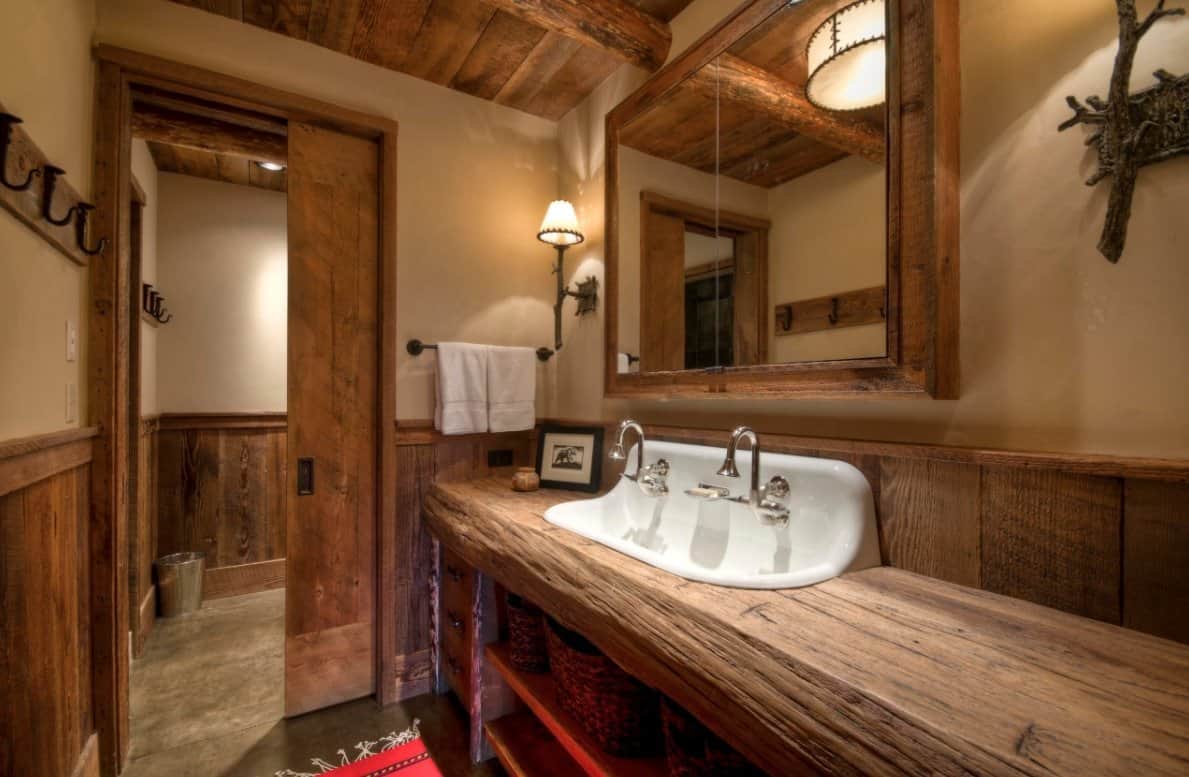
Creative and Popular Ideas for Rustic Bathroom Vanities
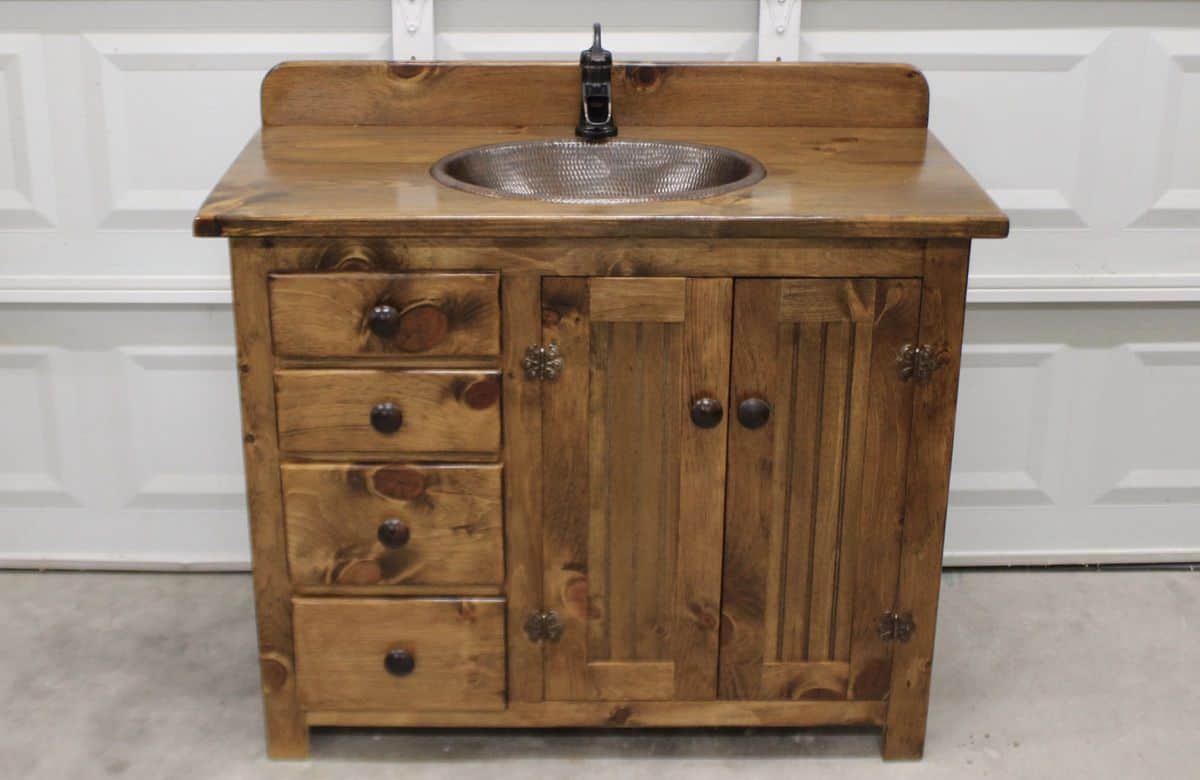
Captivating Bathroom Vanity Designs Rustic bathrooms, Rustic

Rustic Bathroom Vanity Ideas That Are on Another Level
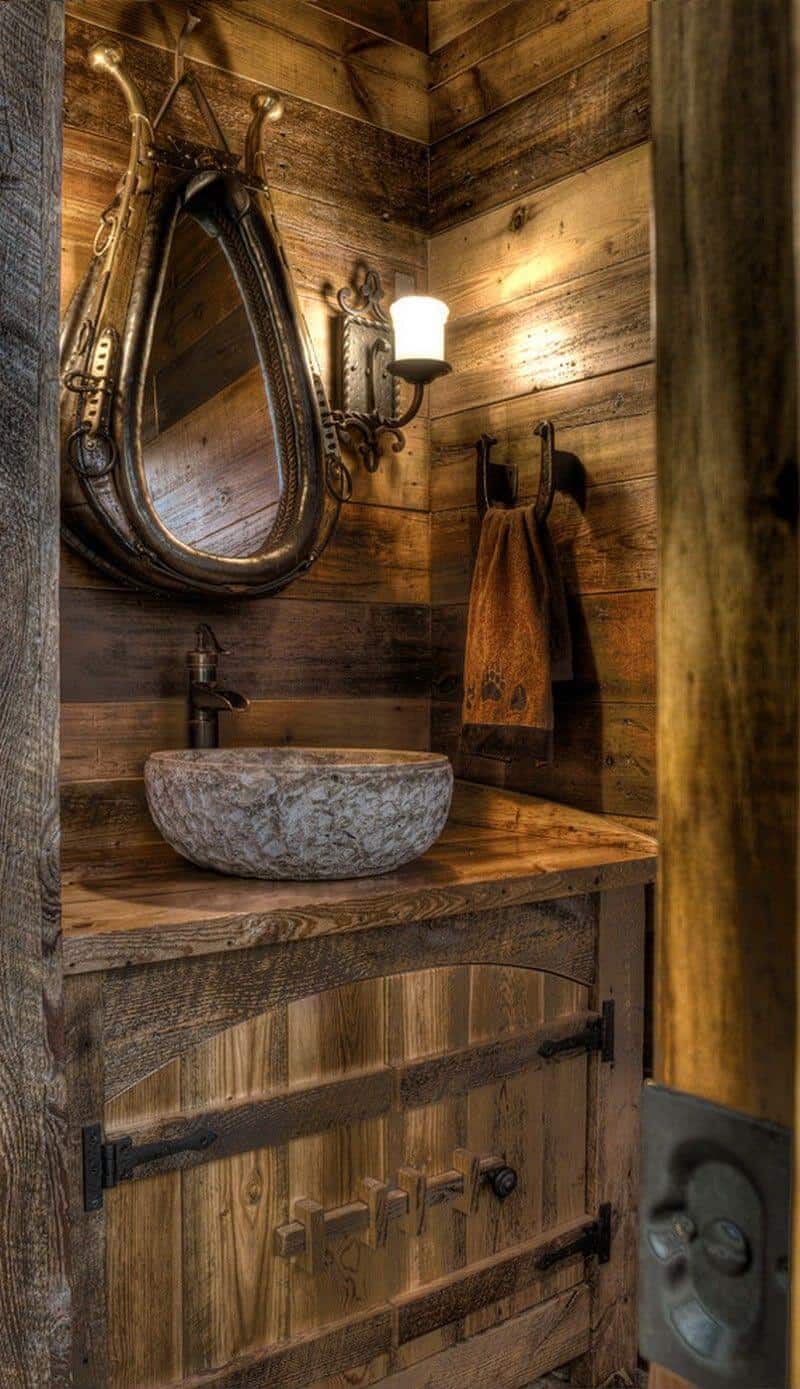
Best Bathroom Countertop Ideas – Bathroom Countertop Sink

Related articles: